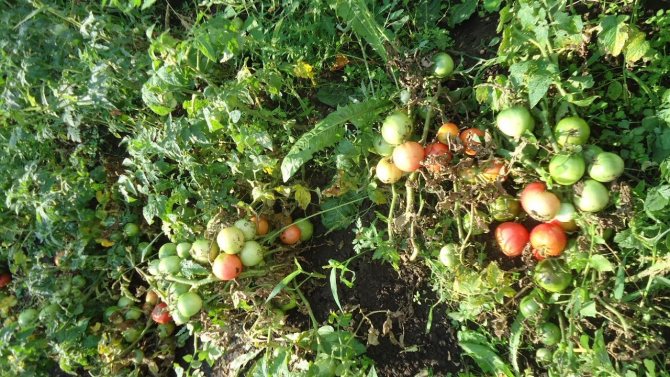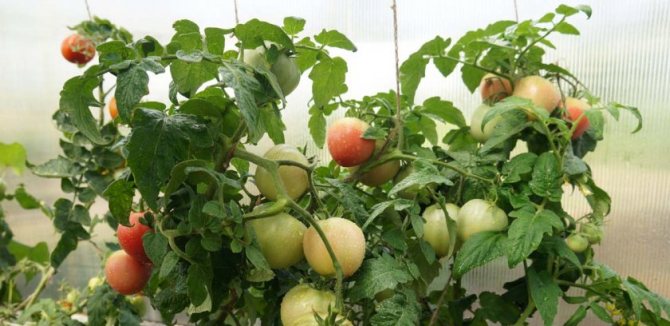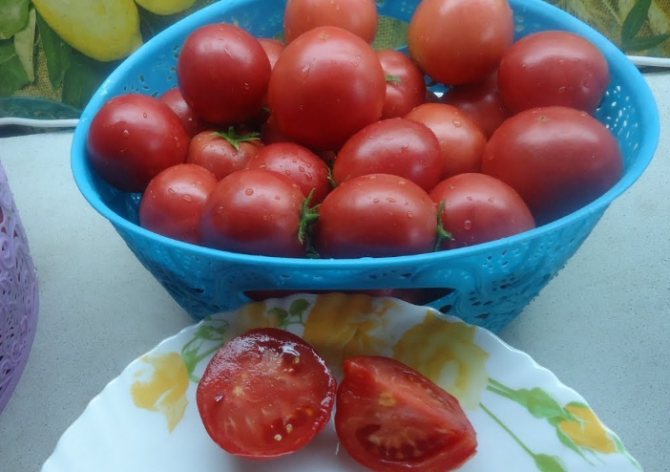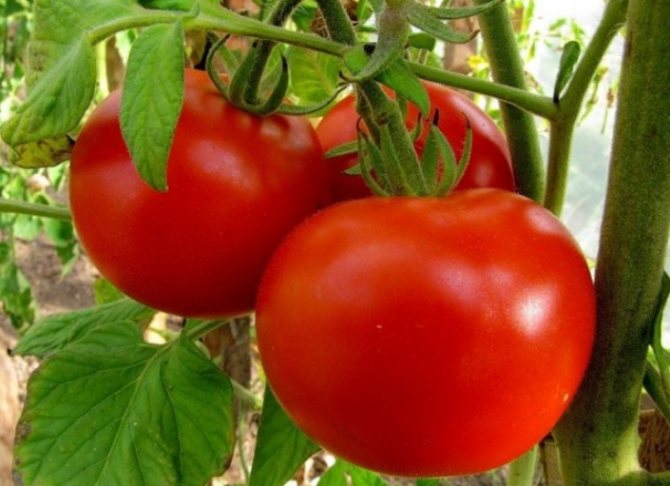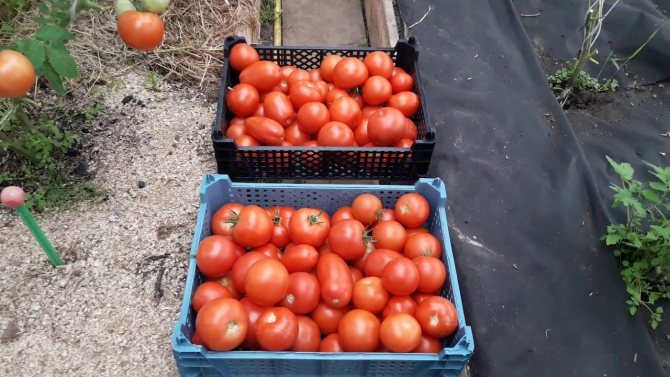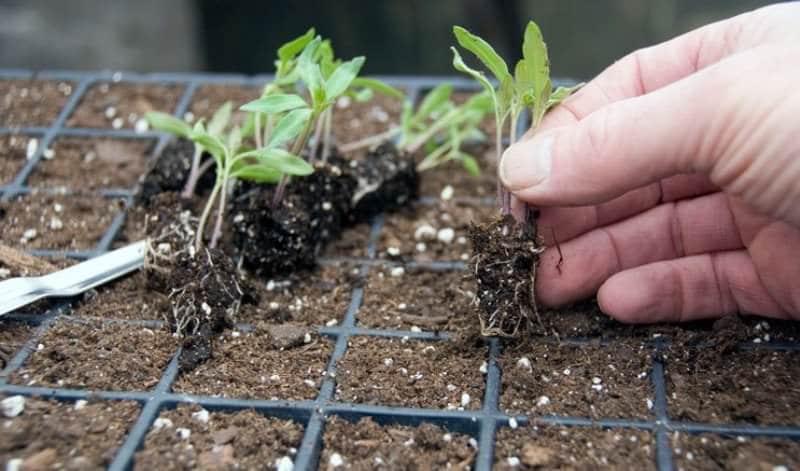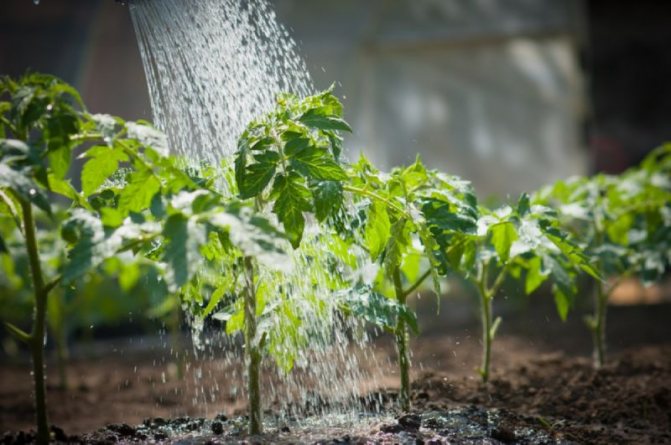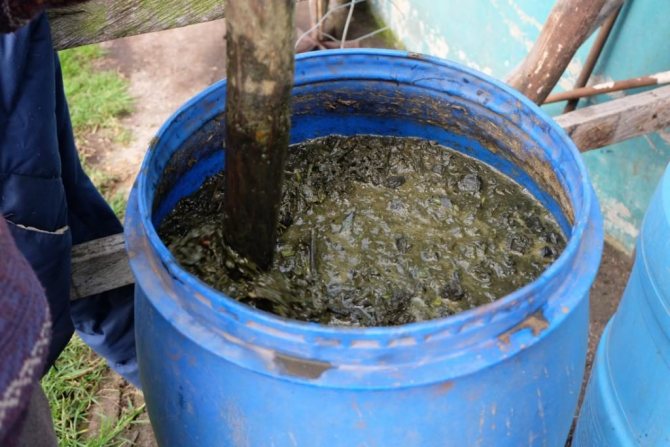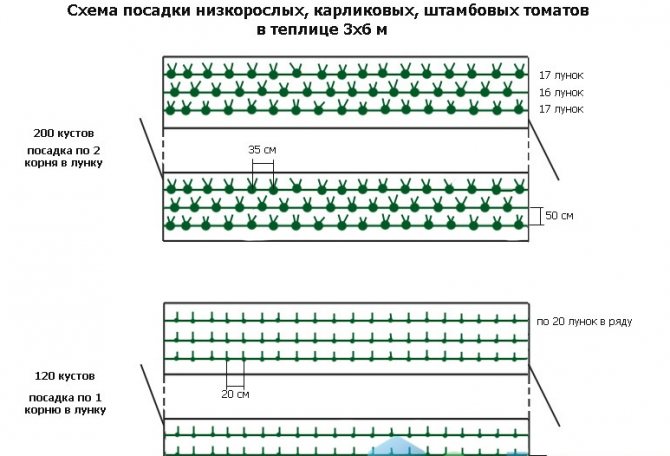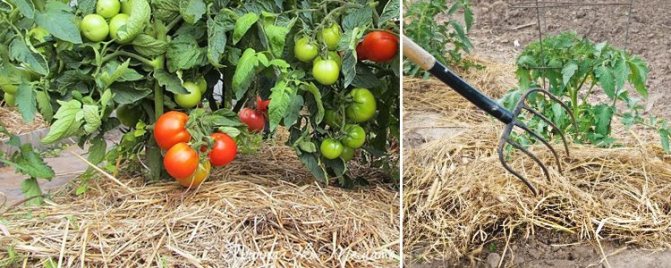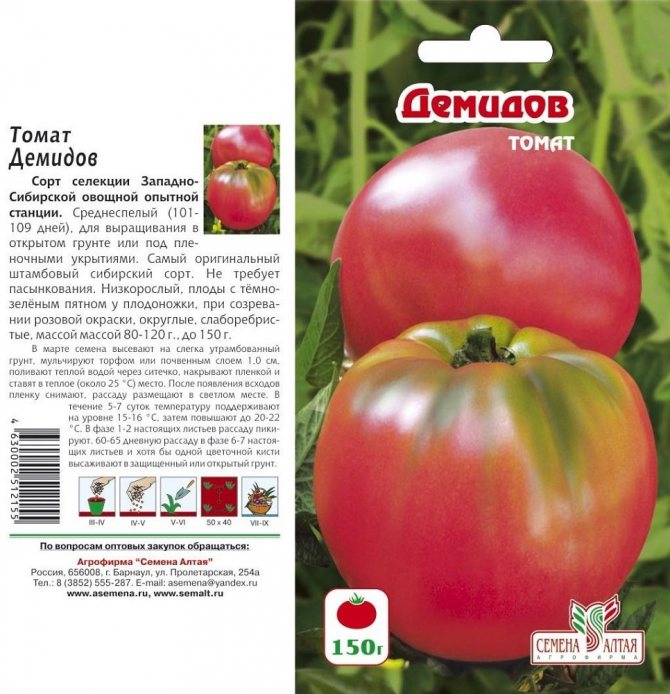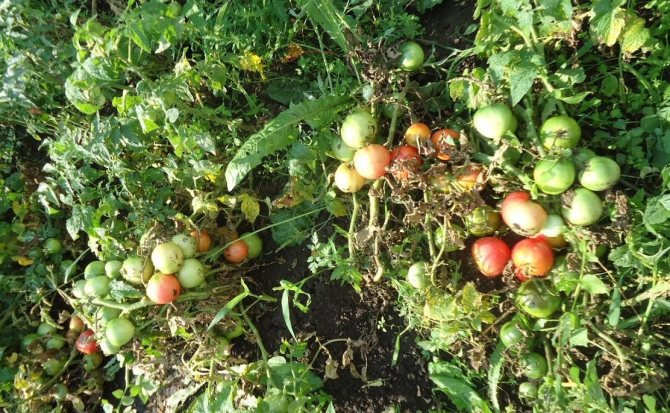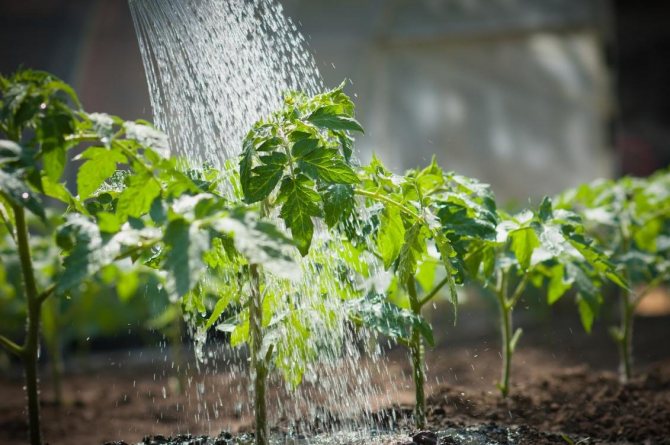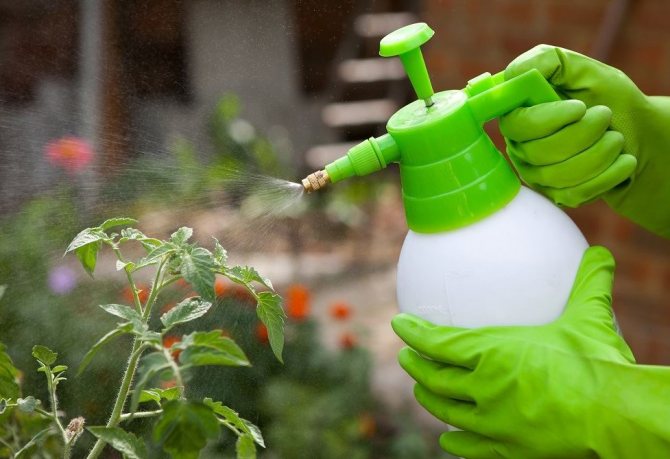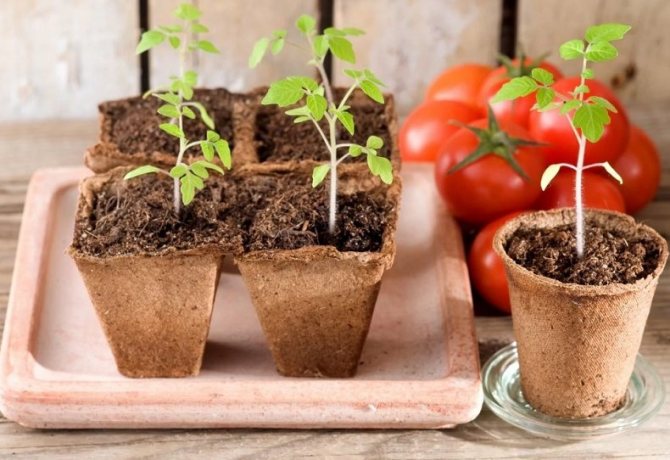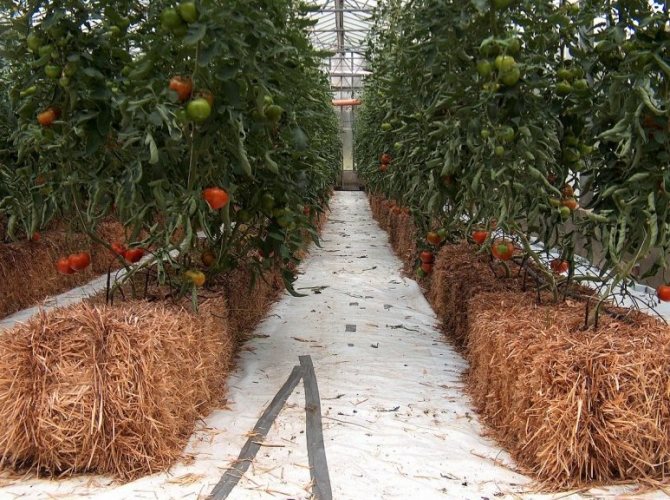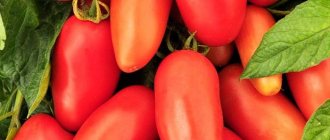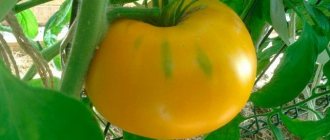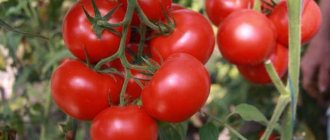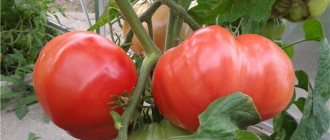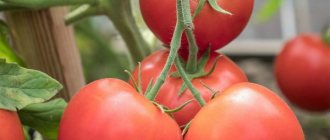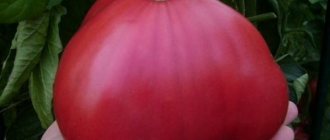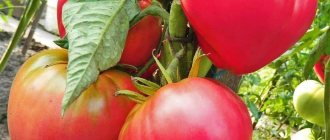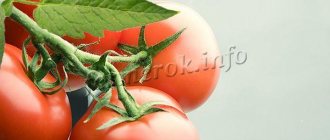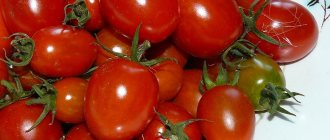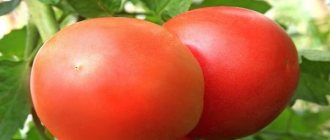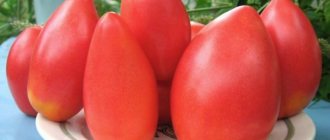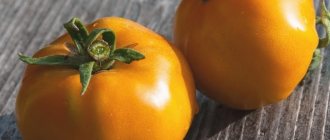Author rating
The author of the article
Yakov Pavlovich
Professor, Head of the Department of Vegetable Growing
Articles written
153
Ground tomatoes are considered the most delicious among connoisseurs of this vegetable. The unpredictable climate in most regions of Russia forces vegetable growers to carefully select tomatoes for planting outdoors. The Demidov tomato variety, in terms of its description and characteristics, meets the main requirements for keeping in an open garden. It is cold-resistant, standard, not afraid of diseases.
Characteristics and description of the variety
Tomato Demidov is similar in characteristics to such varieties as Nastenka and Altai surprise. All these species have determinant (undersized) standard (compact) bushes, are mid-season and are resistant to low temperatures.
The plant stands out not with a spreading, fluffy crown. A low, tree-like stem no more than 50-65 cm high allows you not to tie up the bushes even after the fruits appear on it. Due to the compactness of 1 sq. m. you can plant up to 5-6 specimens of vegetable crops.
Tomato Demidov, according to the description and characteristics of the fruit, is distinguished by the following features:
- tomatoes are slightly ribbed, medium in size;
- the skin is thin but dense, bright pink in color;
- the pulp is not fleshy, but without wateriness;
- the taste is juicy, sweet without pronounced sourness.
Unripe fruits have a dark green spot at the stalk, which disappears when ripe. The full maturity of tomatoes occurs 100-110 days after sowing the seeds.
Demidov variety belongs to salad-type tomatoes. However, many users use the fruit for canning, making juices, lecho, ketchup and snacks.
Harvesting and storing the tomato crop
Ripe and soft tomatoes are not stored for long, they are eaten fresh or processed.
On a note. Fruits taken from the bush in the morning are sweeter and more juicy.
Fruits in technical ripeness (pink, firm to the touch) can lie up to 4 weeks, subject to storage rules. Tomatoes are placed in perforated boxes, laying the fruits with paper or dry shavings. The temperature in the storage should be maintained at around +7 +9 degrees, air humidity 55%.
Expert opinion
Stanislav Pavlovich
Gardener with 17 years of experience and our expert
Ask a Question
Important! Only healthy undamaged tomatoes are put in storage.
To remove bacteria or spores of pathogenic fungi from the skin, each fruit can be wiped with an alcohol solution or potassium permanganate.
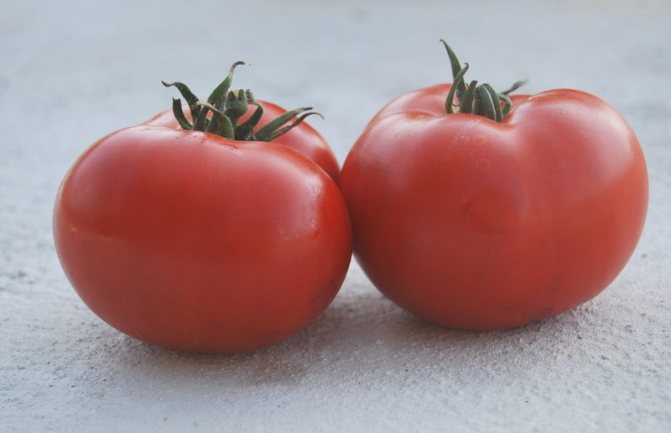
Advantages and disadvantages of the variety
The Demidov tomato variety is distinguished by the following features and advantages over other types:
- mid-season, closer to early;
- resistant to low temperatures;
- does not require pinning and garter;
- versatile in culinary use;
- high yield, not dependent on weather conditions;
- well tied in open and closed ground;
- suitable for both southern and northern regions;
- not susceptible to many diseases, including late blight;
- the determinant type of the bush does not require additional pinching;
- you can remove green fruits for ripening at home;
- tomatoes are stored for a long time, have good transportability.
Among the disadvantages of the Demidov variety, susceptibility to top rot with an incorrect irrigation regime is distinguished.
Main positive and negative aspects
The main advantages of the plants of the Demidov variety are its unpretentiousness and productivity. Additional advantages noted by gardeners are:
- the ability to form ovaries at an air temperature of +16 +18 degrees;
- large-fruited;
- great taste;
- disease resistance.


There were no significant shortcomings in the variety.
Growing features
To accelerate germination, seeds are soaked in Epin's solution. For this, 3 drops of the concentrate are diluted in half a glass of water at room temperature. The inoculum is immersed in the resulting solution for a few minutes. After that, sowing is carried out.
Seeds are sown in March on lightly tamped soil. From above, the seed is mulched with peat or a soil layer 1 cm thick.
After planting, watering is carried out with warm water through a strainer. The container with the planted seeds is covered with foil and removed to a warm place. The ideal temperature for germination is +25 degrees.
When shoots appear, the film is removed and the seedlings are moved to the light. During the next week, the seedlings are hardened by maintaining the temperature in the range of 15-16 degrees. Then, warmer conditions are created for seedlings (20-22 degrees).
Seedlings are dived into separate pots when 1-2 true leaves appear.
Demidov tomatoes are ideal for growing both outdoors and indoors.
Planting seedlings to a permanent place is carried out in 60-65 days. By this time, the seedlings have already formed 6 or 7 true leaves and at least one flower cluster appears.
Demidov is an ideal variety of tomatoes for beginner gardeners, since it does not require pinching and forming a bush, with which amateurs may have difficulties.
Fruit characteristics
- The round shape of the fruit is characteristic, on which a slight ribbing is visible.
- Vegetables in an unripe state have a greenish tone, while those at the stalk are dark green in color. Ripe fruits are pink in color.
- The inside of a tomato has 4 or more seed chambers that contain seeds.
- Solids in tomatoes - from 3.5 to 4.3%.
- The weight of one vegetable can vary from 80 to 120 g.
- They are perfectly stored in suitable conditions. Unripe tomatoes ripen well in a warm room.
Tomato care
Watering plants is carried out in the evening with settled, warm water. To avoid leaf burns, the seedlings are watered at the root. The procedure is carried out every 3-4 days in a greenhouse, and once a week in the open field.
For active growth and increased productivity, Demidov tomatoes can be fed with sodium humate immediately or a few days after planting in a permanent place. The second fertilization is carried out during the budding period, the third - during flowering. After the appearance of fruit ovaries, tomatoes cannot be fed.
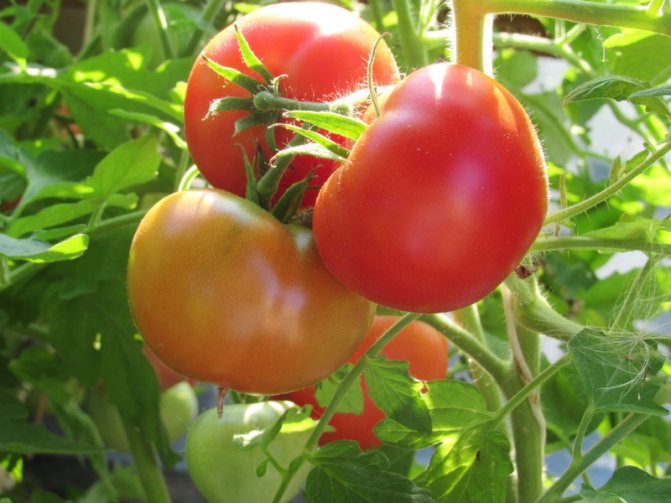

To increase the compactness of the bushes in the greenhouse, plants can be pinned and tied up. Also pinching is done in order to enlarge the fruit. Demidov tomatoes grown outdoors do not need this procedure.
A week after planting, Demidov tomato bushes must be spud to stimulate the growth of new roots. Such manipulations allow you to strengthen the root system of tomatoes. Re-hilling is carried out after 3 weeks.
Tomato Demidov on video
This is a natural tomato variety. Therefore, we recommend taking seeds from a ripe fruit and using them for planting in the following seasons.
If you grew Demidov tomatoes, please write whether you like them or not.What was the yield and taste of the fruit? Will you grow them again? How do you rate the disease resistance of this tomato? Briefly describe what, in your opinion, are the advantages and disadvantages of this tomato. If possible, attach a photo of the entire bush as a whole or individual fruits grown by you to the comment. Thank you!
Your reviews about the Demidov tomato and additions to the description will help many gardeners evaluate this variety more objectively and decide whether to plant it or not.
The site about tomatoes - Tomatland is always at your service.
Buy tomato seeds Cornabel
Russia Gardens
Hit of the season 2020! A novelty that has shown a stunning result! High yield! Great fruit taste!
Treatment and prevention of diseases
Demidov tomatoes are resistant to most diseases. However, the variety is prone to top rot. The disease develops against the background of insufficient watering, increased salinity or acidity of the soil, with damage to the root system.
Affected tomatoes are treated with Brexil Ca, which is used for foliar feeding. The medicinal solution is prepared at the rate of 10 grams. substances per 10 liters of water.
A solution made from wood ash helps to reduce the acidity of the soil. For 2 cups of dry matter, 1 liter of boiling water is required. The concentrated liquid is infused for half an hour, after which it is diluted in 10 liters of settled warm water. The resulting solution is poured over diseased tomatoes.
To combat the disease, calcium nitrate, soda ash and chalk are also used.
Timely watering of tomatoes, liming of soil prone to acidification, mulching of the soil after planting will help to avoid the appearance of rot.
Disease and pest control methods
Despite the good resistance of the Demidov variety to diseases, in an unfavorable year (rainy, cold) it can suffer from diseases. Most often, tomatoes are affected by a fungal infection, less often by viruses. External signs of common diseases:
- yellowing and wilting of foliage;
- the appearance of whitish, brown or gray spots on the fruit;
- mold on different parts of the plant;
- curliness of foliage and flowers.
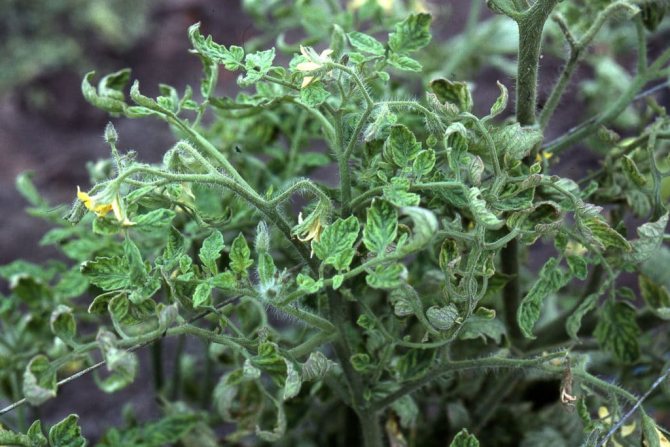

Curly leaves
For the prevention and treatment of diseases, he uses the following drugs: Revus, HOM, Ordan, Skorobey, Ridomil Gold, Fitosporin.
Expert opinion
Stanislav Pavlovich
Gardener with 17 years of experience and our expert
Ask a Question
Important! The instructions should be strictly followed when applying fungicides on tomatoes. Most products are prohibited for use on fruiting plants.
Medicinal folk remedies will not harm the crop and the environment: a solution of milk whey, potassium permanganate, garlic.
Tomatoes growing outdoors are harmed by a host of pests. These are aphids, whiteflies, spider mites, slugs, Colorado potato beetle. Decoctions of tobacco, tansy and wormwood, garlic, soapy water will help get rid of insects. In case of severe damage to plants, they resort to chemicals, use:
- Imidor;
- Aktar;
- Akarin;
- Spark.
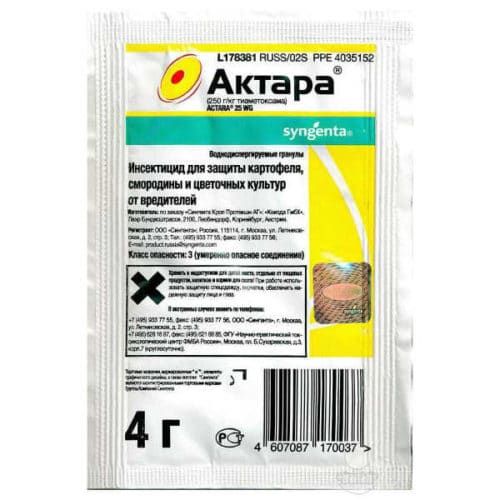

To reduce the number of pests, they observe the rules of crop rotation and fight weeds. Planting among calendula tomatoes, marigolds will help scare away unwanted guests from the tomato garden.
Landing in open and closed ground
Belonging to undersized and weakly bushy tomato varieties, Demidov does not need much effort to form bushes. Most often they are stepchildren, leaving 2-4 stepson. However, this is not always done. Removing stepchildren on low-growing bushes very often leads to a noticeable decrease in yield. But at the same time, the ripening of fruits is accelerated, their presentation improves and their size increases, therefore, in each individual case, vegetable growers decide whether to pinch a particular bush or not.
Each watering of the plant should be accompanied by the obligatory loosening of the soil around the bushes in order to avoid the formation of a crust that interferes with the respiratory function of the root system. The same should be done after every rain. To stabilize the moisture and temperature conditions in the soil, it is recommended to mulch the soil around the bushes with straw, cut grass or sawdust.
As soon as the temperature outside stabilizes and the threat of frost has passed, the seedlings are transferred to a permanent place. When grown in cold regions of the country, it is recommended to install supports for a film shelter before planting over the garden bed. This will protect the tomatoes during a cold snap. Planting seedlings is carried out according to the scheme 50 by 60 cm.
One of the main conditions for successful cultivation is the correct organization of watering. In no case should the soil dry out, this can lead to cracking of the fruit and the development of top rot. Water for irrigation must be warm, the best option is drip irrigation. It will provide uniform moisture to the soil, and moisture will flow directly to the roots of the plant. Once a week, the soil must be loosened and the plants spud
On a note! Watering is carried out in the early morning or after sunset.
For proper growth and development, you need to get rid of weeds in a timely manner. Experienced gardeners recommend mulching the soil, this will prevent its appearance and help to retain moisture. Tomatoes are fertilized at least 2-3 times per season, using organic or mineral substances for this.
Seedlings are planted in a greenhouse in mid-May, in open ground in early May.
The distance between the seedlings should be half a meter. To save space, it is permissible to reduce the gap between bushes to 20 cm. The recommended distance between rows is 0.6 meters.
How to grow seedlings
Demidov is grown both with the help of seedlings and without it (seeds are planted immediately in the beds in May-June). In the first case, planting of seeds begins in 60–65 days.
Seed preparation
Agronomists recommend including 7 basic procedures in the preparation of seed material. When conducting them, follow the sequence, but if some stage is not interesting or seems difficult, just skip it and move on to the next.
Start preparation one month before sowing:
- Calibration... Empty the seeds from the packaging and examine them. Select large, even seeds for planting. Set aside small, crooked, empty to the touch - they will not be able to get a good harvest. Test the seeds with a salt solution: add a tablespoon of salt to a glass of water and place the grains there. After 20 minutes, discard the ones that float to the surface, they will not sprout.
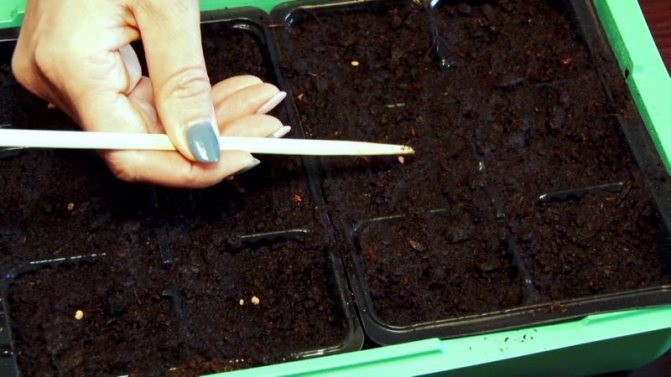

Buy soil mixture at the store. The composition of the universal tomato soil includes:
You can prepare potting mix yourself by combining:
- garden land - 1 part;
- non-acidic peat - 2 parts;
- sand - 0.5 parts;
- humus or sifted mature compost - 1 part.
Add wood ash or dolomite flour, sphagnum moss and fallen needles.
Before planting, treat the soil and containers with boiling water or a weak solution of potassium permanganate.
Sowing
Fill containers 2/3 full with earth. Moisten the soil abundantly, make 1 cm deep grooves in it. Spread the seeds 2-3 cm apart. Cover with a thin (1-2 cm) layer of earth and moisten the soil with a spray bottle.
Cover with plastic wrap (for small containers use thin plastic bags) to create a greenhouse effect and place the containers in a dark and warm (+22 to +28 ° C) place.
Growing and care
As soon as the first green heads appear from the ground, remove the film. Water the seedlings as the soil dries up to the root with a teaspoon or syringe. When two true leaves appear, plant the tomatoes in separate containers. Add mineral fertilizers to the new soil at the rate of 1 tbsp. spoon for 5 liters of soil.Dig in the seedlings up to the cotyledon leaves.
10 days after picking, feed the seedlings with complex fertilizer. Add them every 14 days. Start hardening the tomatoes 2-3 weeks before transplanting into the garden. In the early days, take out into the open air for 3-4 hours, placing containers in the shade. Gradually increase your outdoor time and the amount of sunlight. Leave the seedlings outside overnight 2-3 days before transplanting.
Important! Seedlings standing on the windowsill will be inclined towards the sun, so turn the containers every day.
Pay close attention to the formation of inflorescences. It is advisable to transplant the plants to the site before the first flowers appear. Otherwise, the tomato takes a long time to take root, is delayed in development and fruiting begins later than the period indicated by the manufacturer.
How to grow tomatoes
After 60–65 days, transplant the tomatoes into the area. Be guided by the weather conditions in your region.
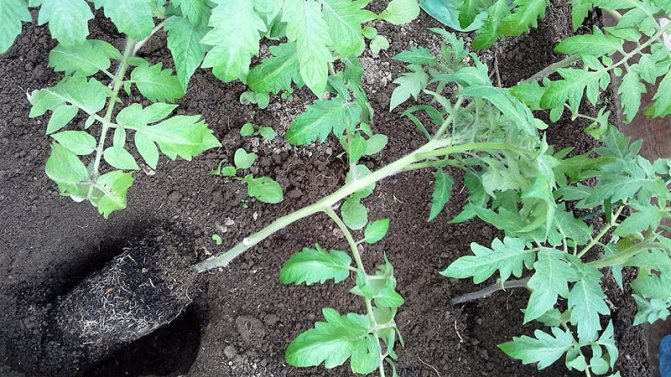

Landing
Plant Demidov tomatoes according to the 50 * 60 scheme (4 bushes per 1 m2). Some summer residents thicken the planting and plant it in a 40 * 50 pattern (6 bushes per 1 m2).
Water the seedlings 2-3 days before transplanting. To make the roots grow thicker and the plant receives more nutrients from the soil, cut off the cotyledons and a couple of lower leaves with a sharp blade.
Dig holes the size of an earthen lump and the height of the stem to the first pair of leaves, pour abundantly with warm, settled (rain) water.
Important! Plant seedlings on cloudy days or in the evening. This contributes to the rapid recovery of the plant.
Use the transshipment method: remove the bush from the pot along with the earthen clod, lower it into the hole, dig in the earth to the cotyledon leaves and compact. Pour water again.
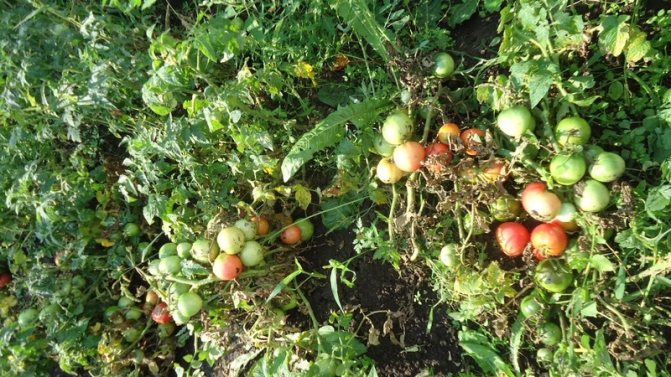

Water the seedlings as the soil dries up with warm water and only in the evening. Loosen and weed the soil around the bushes immediately. Spud the tomatoes 2 weeks after transplanting. Repeat the procedure after 2-3 weeks.
Feed vegetables with complex and mineral fertilizers every 14 days.
Spraying with foliar fertilizers will not be superfluous: wood ash, boric acid solution.
Do not tie or pinch the tomatoes. It is not necessary.
There are no difficulties in growing Demidov's tomato. The main thing is not to allow the soil to dry out, but also not to overmoisten it, especially during the period of fruit ripening. The first will lead to the formation of top rot, and the second will lead to cracking of the skin of the fruit.
Diseases and pests
The producers of the variety claim that the tomato has a high resistance to diseases and pests.
However, untimely watering can cause the formation of apical rot on the plant. With a lack of water and high air temperature, moisture evaporates from the leaves and stems and the plant begins to consume it from ripening fruits. As a result, brown, dry spots are formed on them.
Important! Top rot also actively develops with a lack or excess of calcium, plant oversaturation with nitrogen and an increased acid content in the soil.
Therefore, the primary prevention of the disease is proper watering. If signs of illness are found, start treatment immediately. Remove the affected plant parts and burn them. Spray the plantings with calcium nitrate (7-10 g per 10 l of water) or potassium chloride (30 g per 10 l of water). Of the folk methods, a soda solution is most effective (20 g of soda per 10 liters of warm water).
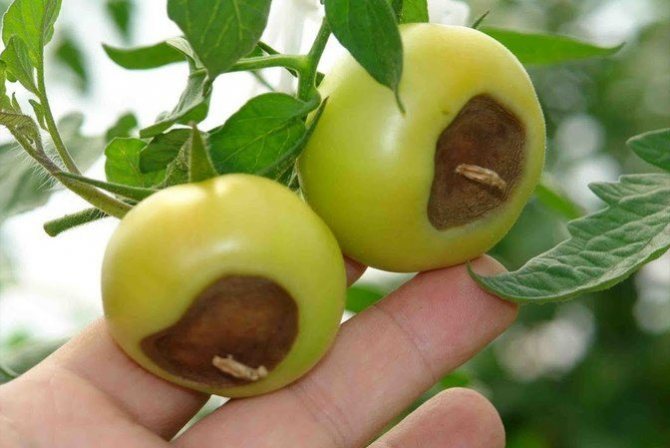

Tomatoes are susceptible to attack by various pests:
- White dots appear on the underside of the leaves from the puncture sites of the spider mite. Later, the vegetables are enveloped in thick cobwebs. Get rid of the pest by spraying tomatoes with alcohol or tincture of dandelions, tobacco, garlic and horseradish roots. Special tools (for example, "Anti-tick") are also suitable.
- The Colorado potato beetle in the landings is hard to miss. In spring and summer, the pest moves to tomatoes from potatoes. The preparations Prestige, Iskra, etc. are good against it. Leaves and stems are processed several times over the summer. To destroy the larvae of beetles, a mixture of water, ash and laundry soap is used.
- In summer, plants are amazedaphid. She sucks all the juices out of the tomatoes, makes them lethargic. To combat insects, solutions of karbofos or bleach are used. A mixture of ash and soap is effective.
In order to prevent the appearance of pests, the bushes are treated with insecticides.
Gardeners reviews
Demidov - tomatoes are most suitable for making salads. They are juicy and this is their main advantage. Despite this, housewives use tomatoes for canning and pickling. Suitable for preparing salads for the winter. The variety is considered an excellent choice for sauces and ketchups.
Gardeners who love growing tomatoes say that Demidov's fruits reach 300 g. Some farmers managed to exceed the mark of 300 g. Of course, this is influenced by weather conditions and care.
Even fastidious gourmets appreciate the taste of tomato. A tomato with a characteristic aroma is suitable for creating sophisticated and simple dishes. Can be used as a decoration or as one of the main ingredients. Connoisseurs note the light pink color of ripe fruits.
Reviews of gardeners in most cases are positive. The culture has many benefits that play an important role in growing. Suitable for planting in all regions, regardless of the climatic zone. Among the shortcomings, there is a lesion with apical rot. This is due to the fault of a person, since the culture was not given quite the right care.
Demidov is a tomato that is worth trying to grow in the beds. Undemanding in care, except for the watering regime. It has a rich tomato flavor and is suitable for cooking. Deserves the attention of gardeners and a separate place on the land.
Yield
The culture gives off fruits gradually, because of this, the harvest is stretched over the season. The variety has a high yield level. From 1 sq. m collect 10 kg of ripe tomatoes. The fruits are suitable for harvesting while still green, they can ripen at home.
Demidov has an excellent presentation, and this applies to the entire harvested crop. Some specimens are susceptible to spoilage, but there are few of them. The density of the fruits allows them to be transported over long distances, which is why they are often found in the markets.
1 sq. m. planting brings up to 10 kg of fruit
You should pay special attention to the watering regime. If you water the tomatoes vigorously after a drought, the skin will not keep pace with the growth of the pulp, and the fruits will crack. And the lack of moisture leads to the fact that the top of the plant gives up its strength to the fruits, weakens and is affected by the top rot.
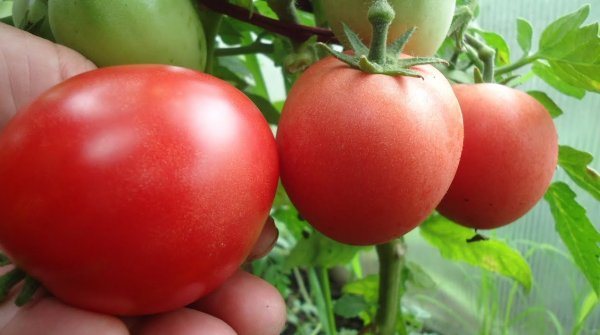

The fruits are stored for a long time, they can easily be transported, 98% of them have a presentation, so they can be grown for sale.
Since the Demidov variety is non-hybrid, the seeds can be harvested on their own.
The harvest of Demidov tomatoes, which reaches 10 kg per 1 sq. m, they begin to collect immediately when a pink color appears on the first fruits. And to increase the yield, experts recommend removing unripe fruits from the bushes. They perfectly reach the condition without loss of taste and presentation in the room, and due to the resulting savings in nutrients, new full-fledged fruits will grow on the bush. The large size of the fruits of this variety makes them unsuitable for canning, but they are great for fresh consumption.
Their density allows you to move tomatoes over long distances. In addition, the fruits of Demidov tomatoes are distinguished by good keeping quality, which allows them to be preserved for a long time.Tomatoes of the Demidov variety have gained great popularity among vegetable growers due to their high consumer qualities and, at the same time, sufficient ease of care for them, high yield and resistance to diseases.
Basically, Demidov tomatoes are consumed fresh, but they are also used for making salads, for the production of sauces, juices, and ketchups. Tomatoes are not suitable for whole fruit canning.
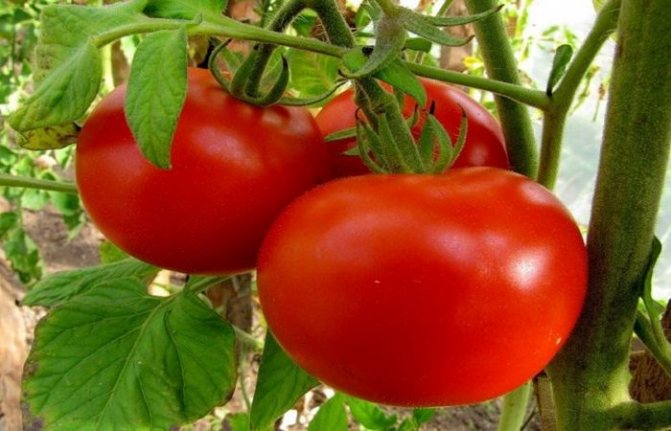

On average, the yield of the variety "Demidov" from 1 m2, subject to all recommendations for agricultural technology and care, is up to 10 kg of tomato fruits.
You can remove tomatoes from a branch before they are fully ripe. Demidov is a variety that ripens well at home. However, the largest and most beautiful fruits intended for seeds should be left on the branch until completely reddened.
The vegetable is perfect for making fresh salads; it makes delicious tomato juice and ketchup. Due to the small size and density of the skin, tomatoes are used for pickling.

